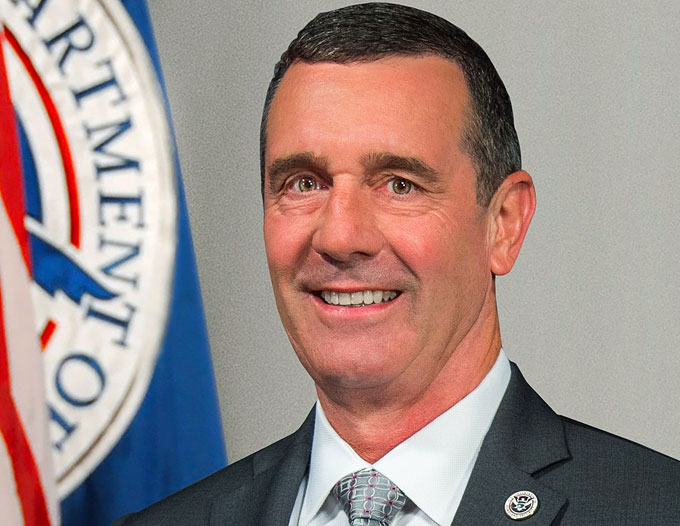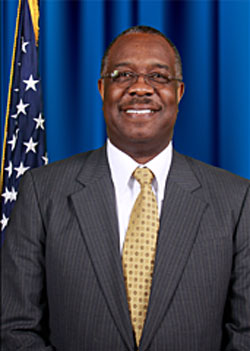
By Mitchell Brown, former U.S. TSA Federal Security Director
After months in which most Americans simply stopped flying due to COVID-19, there are encouraging signs that US air travel is recovering.
Americans are returning to airports.
Much of the credit goes to airports and airlines, which have implemented aggressive cleaning and social distancing measures to reassure passengers that flying is safe.
Unfortunately, one glaringly unpleasant – and potentially unsafe — aspect of US air travel remains unchanged: the U.S. Transportation Security Administration’s (TSA) use of physical pat downs at security checkpoints.
TSA says that to date, over 1500 TSA employees are known to have tested positive for COVID-19.
At a time when COVID-19 remains a serious public health risk to its front-line staff and the traveling public, the question is: why on earth isn’t TSA doing everything it can to significantly reduce – if not eliminate – the use of physical pat downs?
The traveling public hates TSA pat-downs.
As a former TSA Federal Security Director, I can attest to the fact that pat downs – which are required if a passenger cannot be screened with a body scanner – are the most unpopular aspect of aviation security for passengers – and TSA staff.
But don’t take my word for it. A 2019 report from the US Government Accountability Office found hundreds of complaints about pat-downs were filed by passengers between 2015-2019.
Why? Because they are seen as highly intrusive and privacy-infringing.
(According to the TSA, one of many security measures, pat-down procedures are used to determine if prohibited items or other threats to transportation security are concealed on the person. Learn about what to expect if you receive a pat-down screening. Courtesy of TSA and YouTube.)
In the COVID-19 era, TSA pat-downs are inherently unsafe.
CDC Guidelines recommend maintaining at least 6 feet distance from other people and avoiding close contact with others.
This is simply impossible when TSA officers conduct a physical pat down.
Furthermore, TSA can’t ensure passengers won’t get infected due to a pat-down. Case in point: in March 2020, TSA operators infected with COVID-19 physically searched over 40 passengers at San Jose airport in California.
This problem will never go away so long as physical pat downs are standard operating procedure.
(Learn when it’s most important to keep 6 feet of space from other people. Courtesy of Centers for Disease Control and Prevention (CDC) and YouTube. Posted on Jul 13, 2020.)
Physical pat downs are not required for effective security.
TSA doesn’t want to do physical pat downs.
In the aftermath of 9/11 and other terrorist threats, they have been seen as the only effective way of screening people who could not or would not use body scanners.
However, new people screening technologies such as passive terahertz screening systems (pictured) have emerged that enable safe, non-intrusive, “stand-off” threat detection, and that are more respectful to the privacy concerns of disabled veterans, persons with disabilities, and transgender individuals.
These solutions, combined with changes in current TSA screening procedures and training of TSA officers could eliminate the need for physical pat downs in all but the rarest circumstances.
TSA recognizes the need for change – it just has not made it a top priority.

In the TSA’s recently published 2-year strategic roadmap, TSA administrator David Pekoske makes implementing “contactless” transportation security processes one of his top objectives.
TSA has already made modest changes to its screening processes by, for example, allowing passengers to scan their own boarding passes and requiring TSO staff to wear gloves and masks.
Eliminating physical pat-downs would be an obvious and long-overdue additional step in the right direction.
Even before COVID-19, emerging technology had dramatically reduced the need for physical pat-downs, which now create health and safety risks.
In the post-COVID aviation environment, airports and airlines are embracing “contactless” travel procedures, including airport temperature checks and self-service biometrics.
(Spot weapons while ignoring harmless personal items. Evolv Express™ a ‘touchless’ security screening solution that meets all of the post-pandemic security screening requirements. Express is up to 10X faster and far more accurate than metal detectors because it uses new sensor technology and artificial intelligence. Visitors walk right through at a natural pace while carrying their phones, bags and other personal items. Evolv is now also incorporating elevated body temperature (EBT) sensors to alert screeners of potential signs of COVID-19 infection. Courtesy of Evolv Technology and YouTube.)
It makes no sense to reduce physical contact in every area of travel except the security checkpoint when alternative technologies are available.
TSA and Congress need to put an end to unsafe, intrusive, and unnecessary physical pat-downs.
TSA employees and American travelers deserve it.

About the Author:
Mitchell Brown is CEO of Mitchell Brown LECS, Inc. a consulting firm that provides consulting services to local law enforcement agencies. He has no financial ties or interests associated with the opinions in Op-Ed.
From 2007 to 2016, he worked for the US Transportation Security Administration as a federal security director at US airports, including Charlotte Douglas International Airport.
AST strives to meet a 3 STAR trustworthiness rating, based on the following criteria:
- Provides named sources
- Reported by more than one notable outlet
- Includes supporting video, direct statements, or photos
















